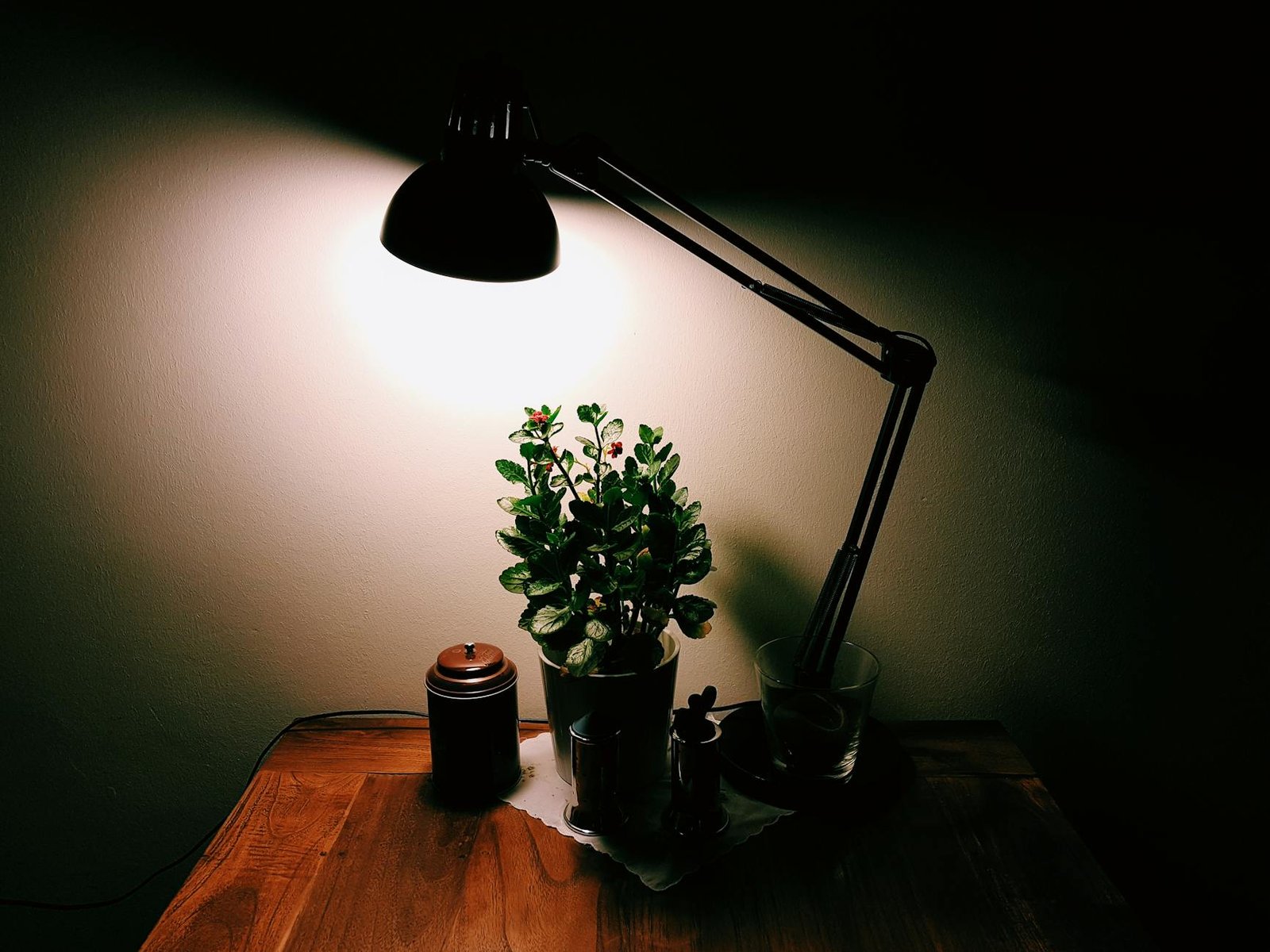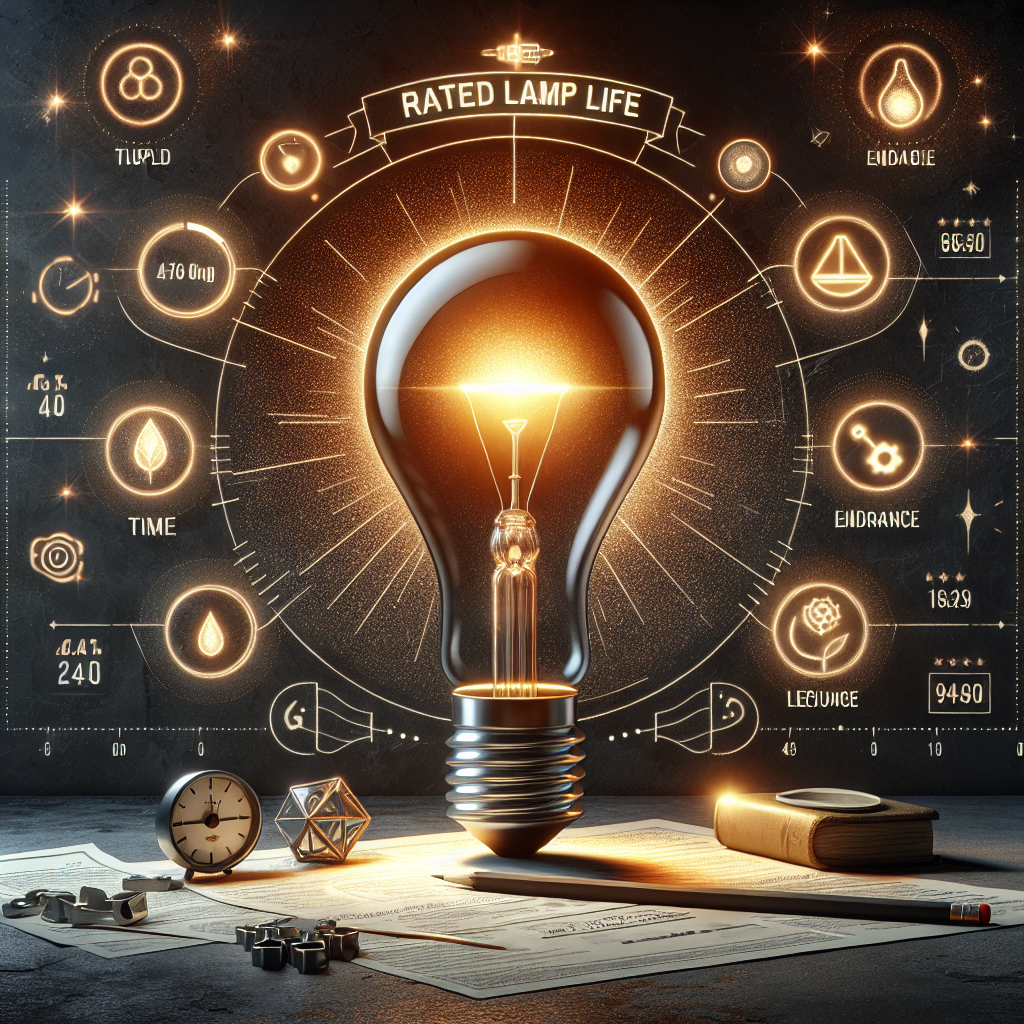Introduction to Our Lamp Life Article
Ever wondered what “lamp life” really means or how it’s calculated? You might think it’s all about how long a lamp will serve you before it fizzles out, but there’s more to the story.
In this post, we will delve into the concept of lamp life. We will explore its meaning in the context of construction, what influences it, and why it’s so important to understand.
We’ll also lay out misconception about lamp life for you to avoid and rectify. And finally, we are going to discuss lamp rating, providing you a deeper understanding of what it entails and how you can use this information for your advantage.
So, are you interested to shed some light on the life of your lamps? Let’s get started!
Table of Contents
Defining Lamp Life in Context of Construction

Introduction to Lamp Life
In the construction and lighting world, a term that often comes up is “lamp life.” It’s not about the longevity of an actual lamp but more directly, it refers to the operating life of a light bulb or a lamp’s light-producing element.
Understanding the Concept of Lamp Life
The term “lamp life” is generally used to signify the average rated life span of a light bulb, usually given in hours. This life expectancy is usually mentioned by manufacturers and is an estimate of the operating hours until the lamp delivers 50% of its initial light output. Various factors can affect the actual lamp life, like operating voltage, manufacturing defects, and operating conditions.
Key Influencers of Lamp Life
Some factors that can directly impact the life of a lamp include:
- Quality of the lamp
- Voltage fluctuations
- Number of ‘on–off’ cycles
- Environmental conditions
An Example to Understand Lamp Life
Consider if a bulb has a lamp life of 1,000 hours. It implies that at the end of 1,000 hours, the bulb will emit 50% of the light it was initially producing. The bulb will still function post this point, but its brightness will continue to decrease.
The Importance of Knowing Lamp Life
Knowing the lamp life is pivotal in planning and maintenance for any building or property. It aids in understanding when a lamp will require replacement, hence helping to avoid unexpected lamp burnouts and allowing efficient scheduling for lamp replacements.
For an in-depth study, you can refer to this study by The Lighting Research Center.
Further Analysis of Rated Life or Lamp Life

How is Lamp Life Measured?
Lamp life is traditionally measured in lab settings, where manufacturers implement consistent conditions to determine the average lifespan of their products. During the testing phase, a batch of bulbs is turned on and left running until they reach the point at which they are emitting only 50% of their original light output. The elapsed time to this half-life point is the recorded lamp life.
More About the Lamp Life Testing Process
Lab testing for lamp life cannot replicate all the various conditions a lamp may experience in real-world use, hence the ‘rated life’ or ‘average life’. An important point to keep in mind is that the ‘rated life’ is not the guaranteed minimum lifespan of a bulb. During testing, some bulbs might fail before reaching their rated life, while others might surpass it. This forms a bell curve distribution for a large batch; the peak of this curve is usually the ‘average life’ or ‘rated life’.
Frequent Misunderstandings About Lamp Life
Some common misconceptions with lamp life include the belief that the lamp will totally fail or cease to work after the lamp life. As explained, this isn’t the case. The lamp will continue to operate, but it will no longer be as bright as it was originally.
Another common misunderstanding is comparing lamps solely based on their rated life. While it might be tempting to choose the bulb with the longest-rated life, it is not necessarily the best choice. Other factors, such as the lamp’s color rendering, energy efficiency, and compatibility with your luminaire, should also be considered.
Simplified Explanation of Factors Impacting Lamp Life
- Quality of the lamp: Higher-quality lamps are made of superior materials and more precise manufacturing processes, leading to longer lamp life.
- Voltage fluctuations: Excessive voltage can lead to a higher operating temperature and reduced lamp life.
- On-off cycles: Frequently turning a lamp on and off can cause stress to the lamp components and shorten lifespan.
- Environmental conditions: Lamps operating in higher temperatures or moist environments typically have shorter lifespans.
For more comprehensive insights into the concept of lamp life, Architectural Lighting Magazine provides an excellent article with detailed information.
Bringing Into Light: The Average Rated Life of a Lamp
Deciphering the Term: Average Rated Life
In the realm of lighting and construction, the average rated life of a lamp plays a crucial role. It primarily signifies the middle-ground lifespan of a light bulb or lamp, typically mentioned in hours format. The ‘average rated life’ is associated with the point at which a lamp or light bulb has reached 50% of its initial light emission capacity.
Conducting rigorous lab tests under stable conditions enables manufacturers to measure this lifespan. Certain factors might affect the average rated life of lamps. These include the manufacturing process, the operational voltage, and the conditions under which the lamp operates.
The Assumptions Behind Average Rated Life
A common misunderstanding about average rated life is the assumption that a lamp will completely cease to function after the duration of the rate. Contrarily, the lamp continues to emit light, albeit at a reduced capacity. Therefore, the average rated life of a lamp is not an absolute measure of a lamp’s complete functional lifespan.
A Closer Look at Factors that Influence Average Rated Life
The quality of lamps, the occurrence of voltage fluctuations, the frequency of on-off cycles, and the environment in which a lamp operates are factors that directly influence a lamp’s average rated life:
- Quality of Lamps: Lamps of higher quality typically feature superior materials and precision manufacturing processes that likely contribute to a longer average rated life.
- Voltage Fluctuations: Lamps subjected to voltage variations can experience an elevated operating temperature, subsequently reducing the average rated life.
- On-off Cycles: Lamps that are switched on and off recurrently can undergo stress to various components, potentially abbreviating their lifespan.
- Environmental conditions: Lamps subjected to higher temperatures or high-humidity environments usually showcase shorter average rated life.
Connotations of Average Rated Life
Selecting a lamp solely based on its average rated life could lead to overlooking critical aspects such as energy efficiency, color rendering, and compatibility with the luminaire. Therefore, the average rated life should be one of many factors considered when selecting a lamp.
For additional comprehension of the average rated life of a lamp, consider this resource from the U.S. Department of Energy . These insights can enable you to make more informed decisions about your lighting needs.
An Exploration of Lamp Rating

What is Lamp Rating?
Lamp rating is a term used by manufacturers to describe the expected performance of a lamp or light bulb under standard test conditions. Essentially, it provides a useful estimate of the lamp’s lifespan and performance characteristics. The rating of a lamp generally takes into account factors such as its life, output, wattage, and efficacy.
Lamp Rating Components
These are the aspects of a lamp typically included in its rating:
- Lamp Life: As discussed earlier, this refers to the average span of a light bulb, given in hours. It signifies the estimated operating hours until the lamp delivers half of its initial light output.
- Initial Light Output: This is the brightness produced by the lamp immediately after it’s switched on or at the start of its life. It’s usually measured in lumens.
- Wattage: This is the amount of electrical power consumed by the lamp. It’s reported in watts (W).
- Efficacy: This signifies the lamp’s efficiency, given as a ratio of the light output to power input. It’s typically measured in lumens per watt (lm/W).
The Calculation and Meaning of Lamp Rating
The rating of a lamp is calculated through controlled laboratory testing, which helps manufacturers generate reliable and repeatable results. Essentially, the lamp rating helps users understand how a lamp is expected to perform over its lifetime, guiding them in selecting the right product for their lighting needs.
However, it’s essential to understand that the lamp rating represents an average estimate under standardized testing conditions. The actual performance of a lamp can significantly differ based on factors like operating conditions and voltage, among others.
Interpreting Lamp Rating
The lamp rating can be used to compare different lamps and light bulbs, but it’s crucial not to base the decision solely on the rating. Besides the lamp’s average life, other factors like color rendering, energy efficiency, and compatibility with the fixture should also be taken into account.
Moreover, a lamp’s rating doesn’t indicate that it will stop working once it reaches the specified hours. It signifies that the lamp’s brightness will be reduced to half of its initial output.
Other Factors to Consider Alongside Lamp Rating
- Color Rendering: This feature is paramount, especially for interior lighting, where the colors should look natural under artificial light. Each lamp has a color rendering index (CRI) that tells us how accurately it renders colors.
- Energy efficiency: An important parameter in the era of rising energy prices and environmental concerns, energy efficiency indicates how much of the power is actually converted into light versus being wasted as heat.
- Compatibility with the fixture: Some lamps may not be suitable for certain fixtures due to their size or shape, or they may not work properly because the fixture doesn’t provide the right voltage or current. Therefore, compatibility with the fixture is another critical aspect to consider while choosing a lamp.
For more in-depth information on lamp rating, you can refer to this article from the U.S. Department of Energy. It provides a detailed overview of the different aspects of lamp ratings and how to apply them when choosing the right lamp for your needs.
Key Takeaways
In the field of construction and lighting, understanding the concept of lamp life or average rated life is essential. This term reflects the operating life of a light bulb or a lamp’s light-emitting element until it delivers 50% of its initial light output. While the end of a lamp’s rated life does not signify its complete failure, it indicates a reduction in brightness.
Factors such as quality, power fluctuations, frequency of on-off cycles, and environmental conditions can greatly influence lamp life. Selection of lamps should also consider factors like color rendering and energy efficiency, beyond solely focusing on the rated life.
All these aspects contribute to the nuanced understanding of lamp rating and help users make more informed decisions for their lighting needs.
Frequently Asked Questions – FAQs
What does Lamp Life mean?
Lamp Life refers to the estimated operating lifespan of a light bulb or lamp, in hours, until it emits 50% of its initial light output. The end of a lamp’s life does not indicate its complete failure but a reduction in brightness.
Does the lamp stop working after its rated life?
No, a lamp doesn’t stop working after its rated life. Instead, it will continue to emit light but at a reduced capacity, typically 50% of its original brightness.
Why is it important to understand Lamp Life?
Understanding Lamp Life is essential for planning and scheduling maintenance in any building or property. It helps predict when a lamp will require replacement, avoiding unexpected lamp burnouts.
Are all lamps with long-rated life good choices?
Not necessarily. While lamp life is an important factor, other aspects such as color rendering and energy efficiency as well as compatibility with the fixture should also be considered when selecting a lamp.






